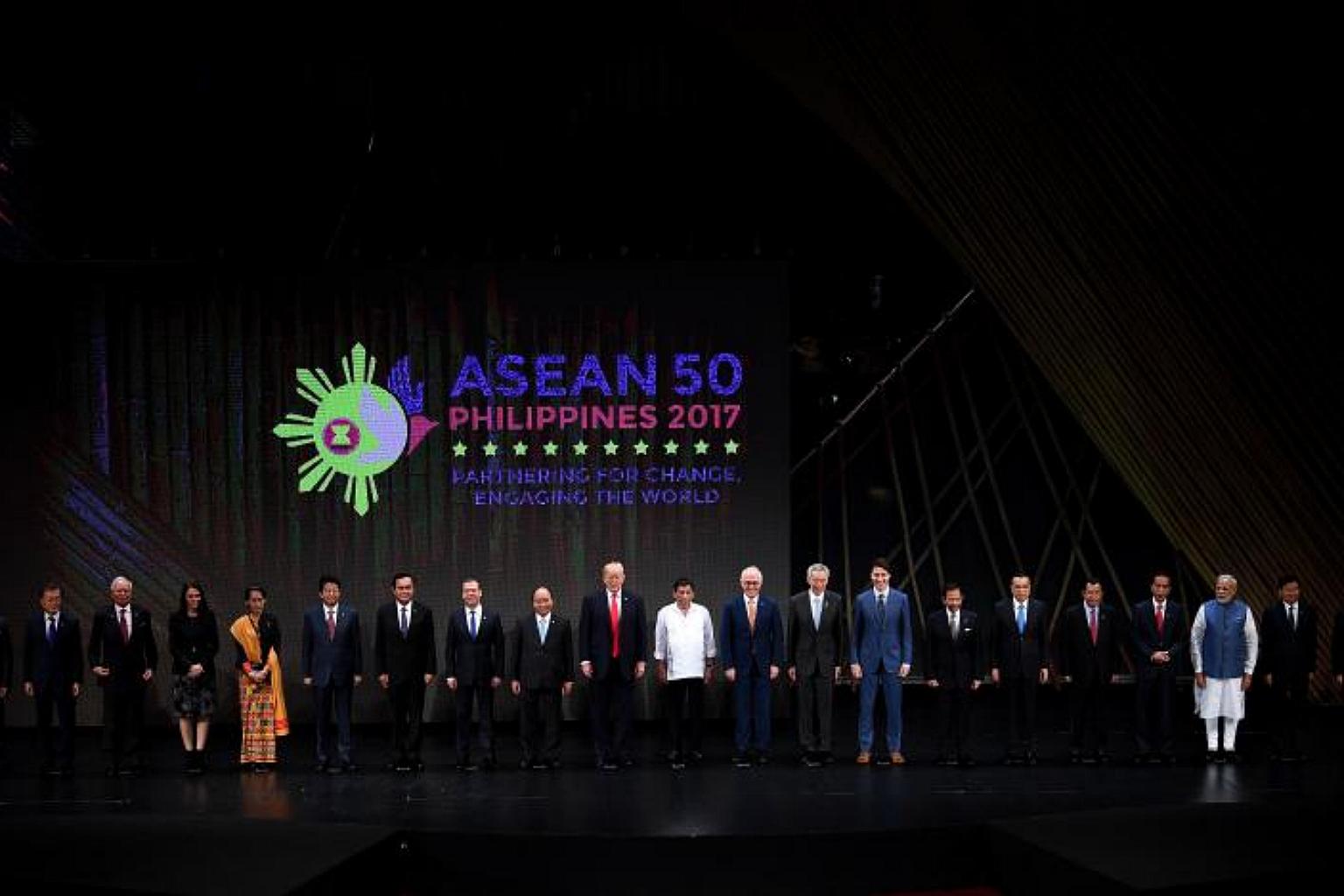Heated debate in Australia over quadrilateral security dialogue
Sign up now: Get ST's newsletters delivered to your inbox

A relatively low-key meeting on Nov 12 on the sidelines of the Asean summit in Manila between officials from the US, Japan, Australia and India has sparked a frenzied debate in Australia about how, or whether, to try to contain China's growing regional clout.
PHOTO: AFP
Follow topic:
SYDNEY - It was a relatively low-key meeting in Manila between officials from the United States, Japan, Australia and India, but it has sparked a frenzied debate in Australia about how, or whether, to try to contain China's growing regional clout.
The meeting on Nov 12 on the sidelines of an Asean summit has been seen as the first step towards reforming a short-lived security partnership among the four nations. The "quadrilateral security dialogue", or quad, was created in 2007 and lasted just a year before Canberra pulled out.
But the step towards revamping the quad prompted fierce criticism in Australia over concerns that the move will unnecessarily antagonise China, the nation's largest trading partner.
Critics included former Australian Prime Minister Paul Keating, who said earlier this month that Canberra's approach to the region was "barren" and was based on trying to force China to accept US primacy in the region.
He said Australia should ensure that it does not "put a ring around China", The Australian reported.
The original proposal for the quad stemmed from the joint response of the four nations' navies as part of the relief effort after the 2004 Boxing Day tsunami.
The idea was formally floated in 2005 by now Japanese Prime Minister Shinzo Abe and eventually came into being in 2007.
But it was swiftly abandoned in 2008 by newly-elected Australian Prime Minister Kevin Rudd.
Most analysts said Mr Rudd's move was designed to assuage China, which had been open about its reservations about the grouping. Beijing sees it as an attempt to contain China.
But the quad appears to be making a comeback.
After the meeting in Manila, the four nations released separate statements, signalling plans to continue the discussions, though no ministerial-level meetings have been announced.
Australia's foreign policy white paper last week indicated that Canberra is committed to developing the quad. It expressly stated that Australia plans to work with India and Japan on coordinated responses to developments affecting security in the Indian Ocean region.
One of the fiercest critics of the quad is Dr Geoff Raby, a former Australian ambassador to Beijing, who said Australia should pursue diplomatic initiatives based on "regional integration rather than regional division".
"It is a potentially dangerous response to China's ascendancy and flies in the face of more than 30 years of Australian policy engagement with China," he wrote in The Australian Financial Review.
In contrast, proponents such as commentator Greg Sheridan said the quad was "harmless" and was not a military alliance.
He said it would foster deeper engagement with India, adding that Australia's involvement should not hinge on Beijing's agreement.
"By Raby's bizarre logic, we should not engage in a structured security dialogue with any nation that one day may have a dispute with China lest Beijing construe this as offensive," he wrote in The Australian.
The debate also reflects growing disagreement and anxiety in Australia about how to respond to China's rise.
In a commentary for the Lowy Institute, Professor James Curran from Sydney University said the quad "remains one of the most poorly explained concepts in recent strategic memory".
He said support for it in Australia derives from an attempt to ensure that the US remains committed to a strong role in Asia, particularly after the apparent disengagement under President Donald Trump.
But he said the grouping will not turn into an "Asian Nato".
"Questions remain. Not only about the Quad's credibility as a counterweight to China, but how it overcomes a complex array of competing national interests among the four: over border disputes, trade and maritime tensions."

